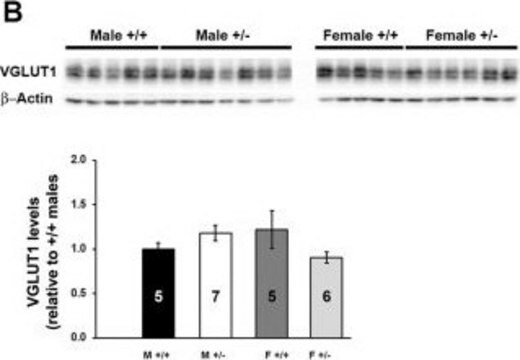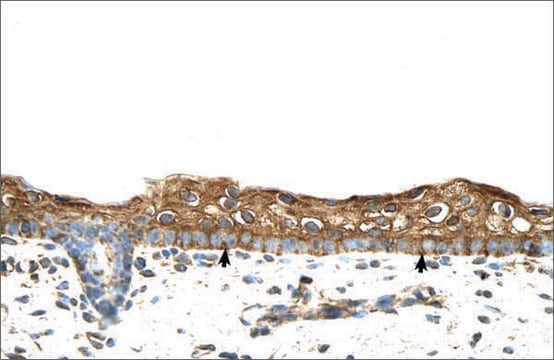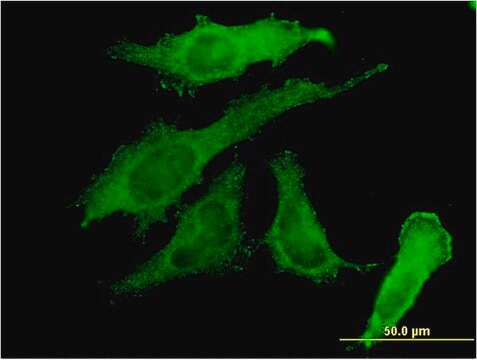ABN1362
Anti-RBPMS Antibody
from rabbit, purified by affinity chromatography
Synonim(y):
RNA-binding protein with multiple splicing, RBPMS, RBP-MS, Heart and RRM expressed sequence, Hermes
Wybierz wielkość
1740,00 zł
Przewidywany termin wysyłki25 kwietnia 2025Szczegóły
Wybierz wielkość
About This Item
1740,00 zł
Przewidywany termin wysyłki25 kwietnia 2025Szczegóły
Polecane produkty
pochodzenie biologiczne
rabbit
Poziom jakości
forma przeciwciała
affinity isolated antibody
rodzaj przeciwciała
primary antibodies
klon
polyclonal
oczyszczone przez
affinity chromatography
reaktywność gatunkowa
human, mouse, rat
metody
immunofluorescence: suitable
western blot: suitable
numer dostępu NCBI
numer dostępu UniProt
Warunki transportu
wet ice
docelowa modyfikacja potranslacyjna
unmodified
informacje o genach
human ... RBPMS(11030)
Opis ogólny
Specyficzność
Immunogen
Zastosowanie
Neuroscience
Sensory & PNS
Immunofluorescence Analysis: A representative lot detected RBPMS immunoreactivity primarily associated with cell bodies located in the ganglion cell layer (GCL) of paraformaldehyde-fixed mouse retinas by fluorescent immunohistochemistry using whole-mounted retinas (Rodriguez, A.R., et al. (2014). J. Comp. Neurol. 522(6):1411-1443).
Immunofluorescence Analysis: An 1:5,000 dilution of a representative lot detected RBPMS immunoreactivity among cells in the ganglion cell layer (GCL) of paraformaldehyde-fixed mouse retinas by fluorescent immunohistochemistry (Courtesy of Dr. Nicholas Brecha, David Geffen School of Medicine at UCLA).
Jakość
Western Blotting Analysis: 0.5 µg/mL of this antibody detected RBPMS in 10 µg of mouse embryonic stem cell (mESC) lysate.
Opis wartości docelowych
Postać fizyczna
Przechowywanie i stabilność
Inne uwagi
Oświadczenie o zrzeczeniu się odpowiedzialności
Nie możesz znaleźć właściwego produktu?
Wypróbuj nasz Narzędzie selektora produktów.
polecane
Kod klasy składowania
12 - Non Combustible Liquids
Klasa zagrożenia wodnego (WGK)
WGK 2
Temperatura zapłonu (°F)
Not applicable
Temperatura zapłonu (°C)
Not applicable
Certyfikaty analizy (CoA)
Poszukaj Certyfikaty analizy (CoA), wpisując numer partii/serii produktów. Numery serii i partii można znaleźć na etykiecie produktu po słowach „seria” lub „partia”.
Masz już ten produkt?
Dokumenty związane z niedawno zakupionymi produktami zostały zamieszczone w Bibliotece dokumentów.
Active Filters
Nasz zespół naukowców ma doświadczenie we wszystkich obszarach badań, w tym w naukach przyrodniczych, materiałoznawstwie, syntezie chemicznej, chromatografii, analityce i wielu innych dziedzinach.
Skontaktuj się z zespołem ds. pomocy technicznej








